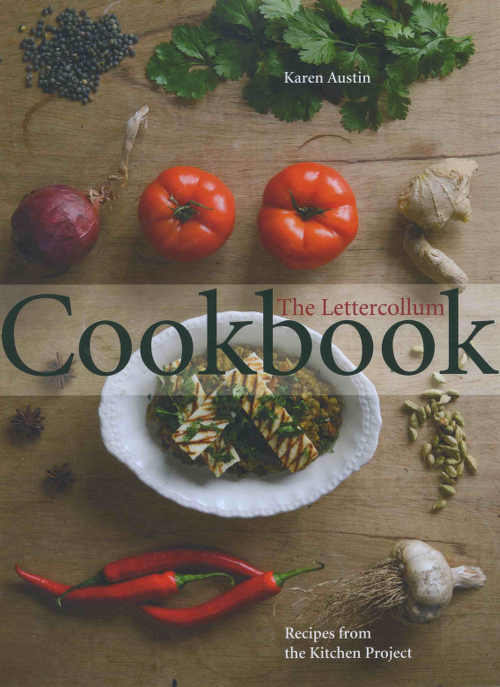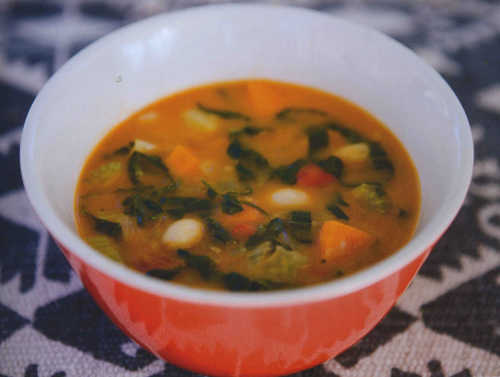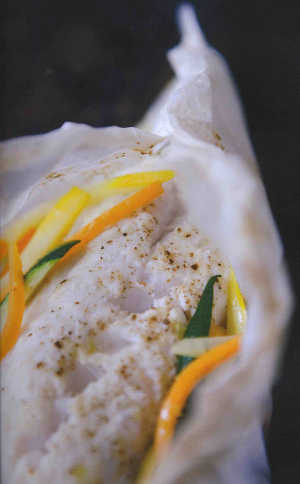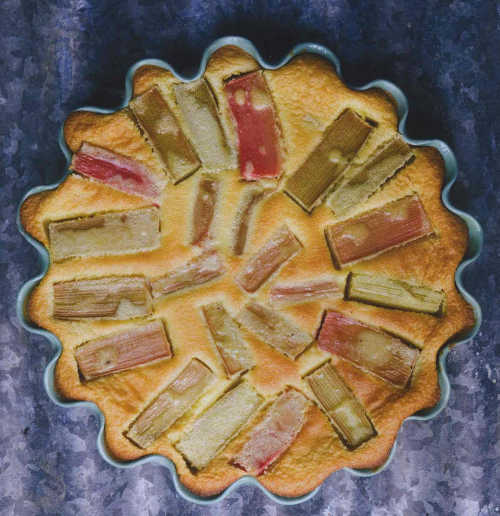Georgina Campbell's Cookery Feature - Recipes from The Lettercollum Kitchen Project
 Georgina Campbell
Georgina Campbell
A popular West Cork destination for food lovers and a delightful find for visitors to the town, The Lettercollum Kitchen Project in Clonakilty is the latest phase in a wonderful food journey that began in the 80s.
On the cusp of the new decade, Con McLoughlin and Karen Austin were part of a group that bought the run down Lettercollum House at Timoleague, lived in the old property as a commune, then ran it as a hostel and eventually as a ‘proper B&B’ - always with the produce of its organically run Victorian walled garden at its heart, and especially in the later phase when their beautiful produce and good cooking was in such demand that they operated a restaurant here. I remember it well - and the twinge of sadness when it closed and the old house was put up for sale. But selling the ‘big house’ was just the beginning of a new stage in the journey, as Con and Karen stayed on in a converted stable block - and kept the walled garden.
And so, the Kitchen Project shop and delicatessen in Clonakilty was born, to make best use of their bountiful organic produce and provide a living. As Karen puts it in her new cookbook, “It was good to have a day job and it also gave us the opportunity to travel again. We did miss the creativity of putting food on plates, but this was remedied by our taking group of Irish people to Spain and France to teach them how to cook.”
It has turned out a pretty perfect solution really, with a delicious range of deli and baked products (including gluten free) on sale in the shop for all to enjoy, and cookery classes offered in their own kitchen.
The story is told evocatively by Karen in her book - where she also shares many of the most popular recipes used in the business, which take inspiration from all over the world and are all very suitable for home cooking. They are manly vegetarian but include some fish recipes, some with ‘a hint of chorizo’ - and some wonderful desserts.
The Lettercollum Cookbook by Karen Austin (photography by Arna Run Runasdottir; Onstream hardback; 175pp, €21). Available from bookshops and online from lettercollum.ie
RECIPES:
 Spring Minestrone Soup
Spring Minestrone Soup
When I was a kid the only minestrone soup I knew came out of a tin; it was a tomato soup with well-cooked cubes of potato, carrot and peas. When I travelled to Italy I discovered that Italian minestrone and tinned minestrone are barely related. Tomatoes are in fact a small part of this soup and the recipe is infinitely variable.
We use whatever seasonal vegetables we have to hand which might include a couple of ripe tomatoes but not always. I think there are two secrets to good minestrone. One is the addition of Parmesan rinds, which give a great depth of flavour - meat eaters might disagree and prefer some fried pancetta or streaky bacon but either will enhance the soup.
The other important factor is to gently sauté all the vegetables together before adding the stock. This helps each vegetable to taste sweeter and more intense. It's a great recipe for a hearty lunch or a lazy dinner and in our house it gets the Parmesan rinds out of the fridge where they would otherwise loll about indefinitely.
1 onion
25g butter
2 tbsp olive oil
2 stalks celery
1 bulb fennel
Parmesan rinds (optional)
1 leek
1 large carrot
1 large potato
2 large, ripe tomatoes, diced
sprig fresh rosemary
7-8 green cabbage leaves
1 litre vegetable or chicken stock
handful cooked cannellini beans
salt and pepper
Parmesan cheese
Serves 4-6
Peel and chop the onion. Heat a large saucepan, add the butter and olive oil, then the chopped onion. Cook on a high heat for a couple of minutes, then turn down the heat and cook gently with the lid off.
Cut the celery and fennel lengthwise and chop into 1-2cm dice. Add to the onions.
Add the Parmesan rinds, if using, and give everything a good stir.
Add the following vegetables to the pot as you chop them, stirring after each addition: the leek, cut lengthwise and rinsed under the tap to get rid of any soil, then chopped into 1cm pieces; the carrot, peeled and chopped into 1 cm dice; the potato, peeled and cut into 1-2cm dice.
Shred the cabbage and add. Cook until the cabbage has wilted down - a few minutes.
Add the stock. Cook for 15 minutes.
Add the cannellini beans and cook for a further 10 minutes.
Season with salt and pepper.
If you have used Parmesan rinds fish them out before serving and discard.
If the soup is too thick, loosen it up with a little stock or water.
Serve with freshly grated Parmesan cheese
 Fish en Papillote (Fish in Parchment)
Fish en Papillote (Fish in Parchment)
Fish cooked in a parcel, in this instance on a bed of vegetables, is tasty, healthy and easy to prepare. The vegetables are cut into matchsticks, gently cooked in a little butter and dressed with ginger. The fish sits on top of the vegetables, enclosed in a paper parcel and cooks in its own juices. Ask your fishmonger to give you plump steaks from the top end of the fish rather than skinny pieces from the tail.
Serves 4
600g chunky fish (hake, cod, salmon or ling)
1 carrot
1 onion
1 leek
1 small courgette
25g butter
25g piece fresh ginger
salt and pepper
lemon juice
Cut the fish into four portion sizes and remove any stray bones.
Peel the carrot and onion and wash the leek and courgette. Cut the onion in half and slice thinly. Cut the carrot, leek and courgettes into thin slices lengthways and then into matchsticks.
Melt the butter in a frying pan and add the vegetables. Season with a little salt and pepper and toss around to coat well. Once you can hear the vegetables cooking, turn the heat to medium, then cook gently for a few minutes, until they have softened.
Grate the ginger without peeling on the coarse side of the grater. Gather the ginger into your hands and squeeze the juice over the vegetables. Discard the ginger. Check the seasoning then put the vegetables aside to cool.
Using a large dinner plate or something similar cut a circle of parchment paper for the fish. Place a small mound of vegetables just off-centre and the fish on top. Season the fish with salt and pepper and a little squeeze of lemon juice.
Carefully close the parcel by bringing the sides together and double folding to make a sealed parcel, twisting the edges together as you go. Put on a baking tray and either leave in the fridge until needed or place into a preheated oven, 180°C (350°F), Gas Mark 4. Cook for 12-15 minutes.
Put the parcel on a plate and serve with twists of lemon.
 Rhubarb Clafoutis
Rhubarb Clafoutis
When the new season rhubarb is available this is an impressively simple dessert to make. A variation on the French classic, to be a true clafoutis it would need to be baked with cherries but if we stuck to that we wouldn't get to eat many clafoutis as in Ireland cherries are pretty scarce.
This is a batter-based custard baked in the oven. Easy peasy. No pastry or anything complicated, just whisk the ingredients together and pour over roasted or poached fruit and pop in the oven.
It makes a great dessert and if you take the time to arrange the fruit on top it looks quite elegant.
The clafoutis can be baked in any ovenproof dish or baking tin, ideally 20-24cm in diameter. For individual portions use buttered ramekins.
6 stalks rhubarb
170g caster sugar
4 large eggs
50g white flour (or polenta if you want gluten-free)
50g ground almonds
250ml cream
1 tsp vanilla extract
15g butter to grease dish
Serves 4-6
Preheat the oven to 180°C (350°F), Gas Mark 4.
Wash the rhubarb and cut into 5cm lengths. Toss in about 20g of the sugar and put onto a baking tray.
Bake in the oven for 12 minutes. The rhubarb should be sweating at this stage with the juices beginning to run.
Crack the eggs into a bowl then add the remaining sugar, flour and ground almonds. Whisk to a smooth paste.
Put the cream into a small saucepan with the vanilla and bring to the boil.
Whisk the cream into the egg mix.
Rub a baking dish with butter and pour in two-thirds of the mix. Arrange the rhubarb on top and drizzle over the remaining batter.
Bake in the oven for 35-40 minutes. Check after 30 minutes just in case your oven is particularly hot. The clafoutis is cooked when it is set and golden all over.
Serve at room temperature with whipped cream on the side.





There are currently no comments
Leave a comment
Not a member? Register for your free membership now!
Or leave a comment by logging in with: